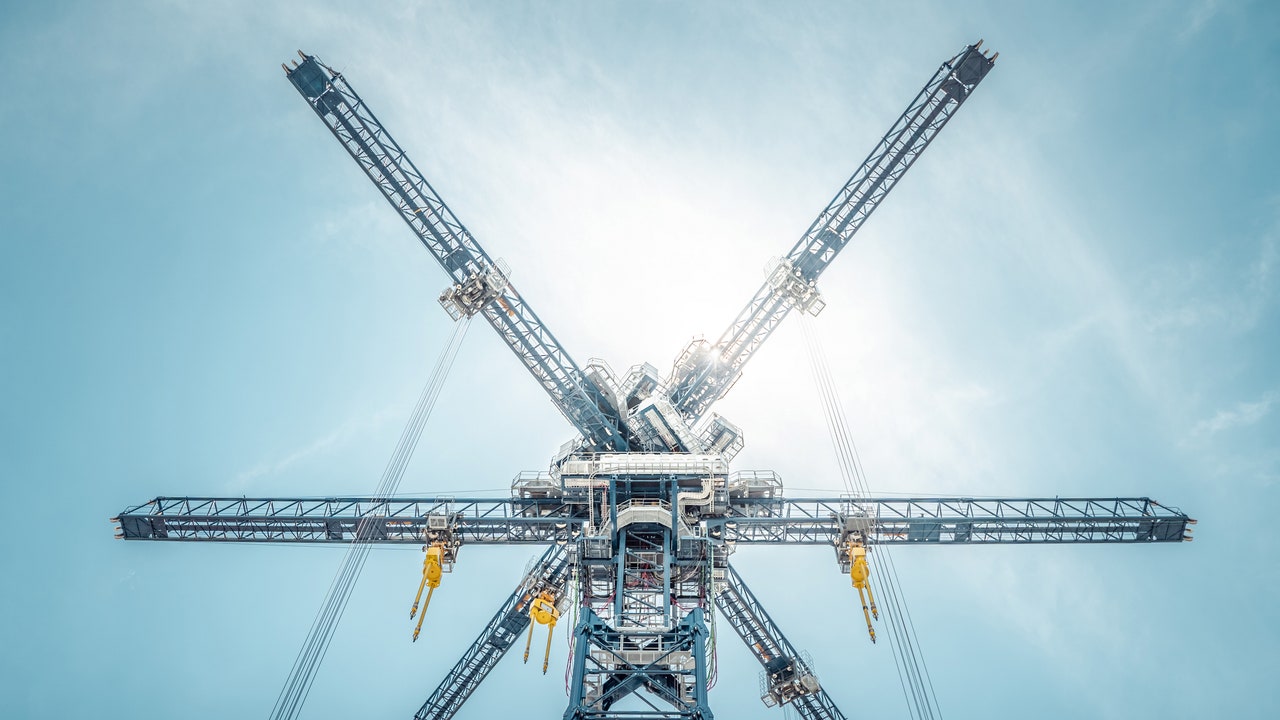The concrete blocks are slowly hoisted upwards by motors powered with electricity from the Swiss power grid. As each block descends, the motors that lift the blocks start spinning in reverse, generating electricity that courses through the thick cables running down the side of the crane and onto the power grid. In the 30 seconds during which the blocks are descending, each one generates about one megawatt of electricity: enough to power roughly 1,000 homes.
There is a youtube-video from 2 years ago, debunking that idea: https://youtube.com/watch?v=NIhCuzxNvv0
and heres another: https://www.youtube.com/watch?v=iGGOjD_OtAM
Adam Something <3
was hoping someone would link this here.
So many recent “inventions” are just bad versions of already existing inventions. E.g. the gravity energy storage is already perfected in the pumped storage hydro power station, the Hyperloop is way worse than regular trains and so on and so forth…
But that’s irrelevant. You just have to vaguely overpromise stuff to investors and then get a clean exit to cash out.
Reminder of the amount of money and resources spent trying (without succeeding) by multiple independent companies to put solar panels on various roads in the US and Europe. Before anyone had even considered putting solar panels on the roofs of buildings in the area.
Solar Roadways! One of the most blatant ‘open scams’ I’ve seen. Thunderf00t made several videos about their progress and even drove to their demo installation to have a laugh.
The concept on its face is just so stupid when rooftop solar is already an extremely mature field, and most roofs in cities don’t have solar panels. Why are you starting your solarification with a project requiring monumental engineering breakthroughs when you haven’t even exhausted the easy options that have been working for decades? Put solar panels on all the roofs first, then look into novel places for them (even then, I doubt putting them on the road surface will ever be practical).
It’s also kind of sad because you can tell that the Solar Roadways guys do actually believe in their concept (otherwise they’d have eloped with everyone’s money years ago). It’s just incredibly misguided, ignorant of the physics and tech involved, topped with good old overconfidence.
It’s also kind of sad because you can tell that the Solar Roadways guys do actually believe in their concept (otherwise they’d have eloped with everyone’s money years ago)
Why run away when you can just make more money continually while being an amateur?
that was a good watch. thanks
It can be used to store energy for a while, but there are already other methods that I see more efficient, such as pumping stations to tanks that can provide energy with hydraulic generators, large salt tanks to store excess energy in the form of heat, among others, which have already shown their efficiency for a long time.
These can’t save much power and also they need crazy amounts of concrete. It’s a typical startup idea, not very useful.
Concrete is very cheap, not a problem to make this blocks, every dam or bridge need a lot more of concrete.
Concrete is very cheap, not a problem to make this blocks
Both statements are wrong. Water is cheaper than concrete and these blocks won’t work for a long time. Apart from that, Concrete is definitely not “green” by any means.
every dam or bridge need a lot more of concrete.
Yeah but every hydro energy dam can also store exponentially more energy than this abomination.
Also, the production of concrete releases carbon dioxide from the carbon stored in the minerals. Not different from burning a bunch of fossil fuels.
I know how is made concrete, among others, it is a residue of the blast furnaces from the steel manufacturing or it is also found in nature due to volcanic eruptions, which was already used in ancient Rome for their palaces, aqueducts and the Colosseum, all made of concrete. Anything that is manufactured implies an environmental impact, at least if you do not want to replace all constructions and buildings, your house, with constructions made with bamboo (also this has an impact in the environment). Also the fabrication of eolic generators and solar cells are not “green”. It is a difference between a manufactured object, which involves a certain amount of non-renewable energy for its fabrication for the use of a lot of years, than using non-renewable energy continuously for a lot of years to provide electrical energy.
Both statements are wrong. Water is cheaper than concrete and these blocks won’t work for a long time. Apart from that, Concrete is definitely not “green” by any means.
Yes, but wiss less mass, ok, concrete isn’t so grren, but this is irrelevant in one construction for years, same in all constructs made with concrete, like the employed for hydro energy dams, which can only be used in places that allow the accumulation of hidro energy.
True that it can’t store the amount of energy like a hidro energy dam, but this is not intended to replace it, but rather an additional system that can be used, like others that exist, such as the aforementioned saline hor geothermic eat accumulators for places where a dam is not viable.
I don’t see why pumped hydro storage needs an alternative like this, or how this will have any benefits over it for bulk energy storage. At the end of the day, gravitational energy is gravitational energy whether it comes from water or concrete. And one is much more mature and proven than the other, with less mechanical complexity (two lakes, a pipe, valves, pumps and turbines compared to an extremely complex system of cranes, rotation points, ropes and pulleys, clamps for grabbing the blocks, many small motor-generators, and concrete blocks that need to be stacked perfectly so they don’t topple over) which inevitably translate to more points of failure. Also, size matters since it’s the mass of the moving material that determines how much energy you get out of it, and this will never beat pumped hydro in scale, simply because water is a much easier bulk mass material to deal with. You can also use the lakes for other purposes, like recreation, potable water sources, and as a host for aquatic biodiversity. Finally, if it rains over your top lake, you get free energy added to your system (essentially solar energy).
What’s actually missing from the renewable grid space is instantaneous power compensation on the orders of milliseconds to balance out fluctuations in the grid due to changes in usage (which cause brownouts). Assuming it starts in the idle state (generators not spinning), pumped hydro storage takes a few seconds to start delivering energy which makes it unsuitable for this kind of power smoothing, but neither is this because the cranes need time to find and pick up the blocks. Currently, lithium ion batteries are used for this, but some are trying to build more sustainable alternatives with compressed air tanks, heat energy storage, supercapacitors, or motor-flywheel-generator units.
You can use hydro systems in countries where a great differencias of terrain levels, what is incompatible for Example with Belgium or the Netherlands or lots of contries in Africa, where are no much water, If the Netherlands puts a dam in the Rhin, Netherlands disappears, they only can construct big and high deposits for this which needs more concrete as this artifact, which can be good a alternative or a supplement, better than they put a water pipeline through several countries for the energy storing. Maybe the concrete blocks can be changed with iron blocks, which have a bigger mass and can be better recycled.
Every solution needs a inversion of energy, not all green, even pollutant from manufacturing products, like resines for eolic generators, PVC or other polymers for the cables and generators or toxic products for solarcells, but only one time for many years, not as the continous use of fossil energy I think, insteat of discriminate from the beginning, it’s better to try to find better solutions. It’s true that not all works as espected in the beginning, but if they don’t try it, the problem of energy storing persists,and avoid that a lot of countrys can use efficiently energy renovable.
Take a look at this- Compressed air underwater energy storage. http://euanmearns.com/a-review-of-underwater-compressed-air-storage/
Good idea, but I don’t believe that this system can store more energy than for a few houses. Can be a good system for a house near by a lake. For hydraulic store systems the use great lakes or very huge deposits… But yes, can be another auxiliary system in certain cases
Hey, super late comment I know, but I’ve been thinking about this lately.
You can use hydro systems in countries where a great differencias of terrain levels, what is incompatible for Example with Belgium or the Netherlands or lots of contries in Africa,
In that case, instead of a stack of concrete blocks, why not have a giant water tower with one tank at ground level and one tank high up in the air? You could even have it be a literal building: big tank underground, apartments in between, big tank on the roof. If lots of buildings in an urban core had this, it would actually be really efficient because there would be basically be no loss from power transmission.
Water will never get damaged like concrete blocks can, don’t produce carbon when it’s made, and can be easily replaced if any is lost.
where are no much water
Well, with this, that would be a negligible problem because it would be a closed system. It would basically only require an initial investment of water and very occasional top-ups. You don’t even need the water to be of that great quality if you’re not using the water tank for anything else, even sea water can be used. Or, if you’re using treated water, it can double as both the city’s potable water reservoir and energy storage. Plenty of cities already have giant water towers feeding the entire urban area after all, and nearly every high rise building already has potable water tanks like these, because it means they don’t have to run pumps constantly to maintain water pressure, and can rely on hydrostatic pressure due to gravity.
Plus, making concrete also requires water, so using concrete probably isn’t saving that much in it. And with concrete, the water is permanently incorporated into it and can never be reused again, probably not the best idea for an already water scarce region.
Yes, but concrete need less water and in a lot of countries with lack of water it’s too valuable to be used as a simple weight, besides it requires a much larger installation due to the lower specific weight and greater maintenance due to evaporation and eventual losses, which is not necessary in concrete, which can last for centuries with minimal maintenance, in installations that are much more compact. The best way to store energy depends on many factors and can vary greatly, depending on the circumstances of each country. Where there are large slopes and mountainous regions, without water shortage, naturally, water tanks are the obvious solution, while in desert areas it is not, in others it can be a solution in salt mines, as thermal storage, etc.
You don’t need to build a tower to store water. You can also build a reservoir by simply digging a hole.
No, to create a pressure a hole does not work, a pumping station uses the excess energy produced by the wind generators or photovoltaic cells to pump the water to a high tank, where, when emptying it, enough pressure is created to put in Turbines are running that generate energy to make up for what is lacking in wind or solar production. The same as the hydroelectric productions with dams. Without difference in height there is no flow or water pressure, first of physics. See the watertowers which give the water to the houses, al they are the highest poit in a village. Pumping stations are working exactly the same way, with the difference that instead of houses there are generators and that the deposit must be some bigger.

Yes, but wiss less mass
What do you mean by this? I bet you I can buy ten tons of water for way less money than ten tons of concrete, not only because you need lots of water to make concrete…
Apart from that, you need lots of dead weight just to hold the cranes in a stable position.
Every crane need a lot of dead weight for a stable position, don’t see problems where are no exists. Concrete isn’t a sustance which contaminate, is cheap and disposable in any quantity as byproduct in any fundition of steel. They all have beside mounts of concrete.
Every crane need a lot of dead weight for a stable position, don’t see problems where are no exists.
Yes, but why build a crane when you can also build a water reservoir?
What will you do in a desert zone? It’s the best for solar energy but not for water
I bet you I can buy ten tons of water for way less money than ten tons of concrete
In most cases, you can even get water for free with rain and runoff. Pretty much no large-scale artificial lake is filled manually, they just dig a hole and wait.
Did you read the article? The concrete block is supposed to be reused for a long period of time, that’s why the guy said it’s a long term return project.
Did you read the article?
Yes, did you? Did you also form your own opinion based solely on the article?
How long is the period of time? How long does it take for concrete to actually be affected by weather conditions?
every dam or bridge need a lot more of concrete
Pumped energy storage can be done with just a pipe between two lakes, using natural elevation differences as the source of gravitational energy. Which would be a fraction of the concrete required for a dam or this crane thing, and would also largely be independent of the sizes of the lakes, so you can scale it up to an enormous capacity with not that much more concrete.
I think the final solution goes the same way as the internet, decentralized energy production. Even in the past they show that a building can be completly autonom, some small villages have their own energy central with renevable energy (hydraulic, eolic, geothermic…) Decentralized systems don’t need complex systems to store the energy, Also great manufacture are using own systems to recycle energy, that can be stroring the heat of some processes ore using the excess off energy to produce hidrogen.
There are a lot of systems, like they have in a village in the Netherland, which use the heat in summer of the streets pumped in a great subterran deposit and use this stored heat to maintand free of ice the streets in winter and they have enough also for the houses for heating. https://www.sciencedaily.com/releases/2017/01/170110121112.htm It is not only the way to produce energy, but also the way to use it more efficiently. Projects as they are already using, to use mini-generators under the sidewalk, which produce the energy necessary for lighting the street when people walk on it. Clothes that generate enough energy with body heat to charge the mobile, etc. We are surrounded by usable energy, which we only do to a small percentage today, adding centralized private energy companies that dictate their standards in view of profit rather than efficiency.
deleted by creator








